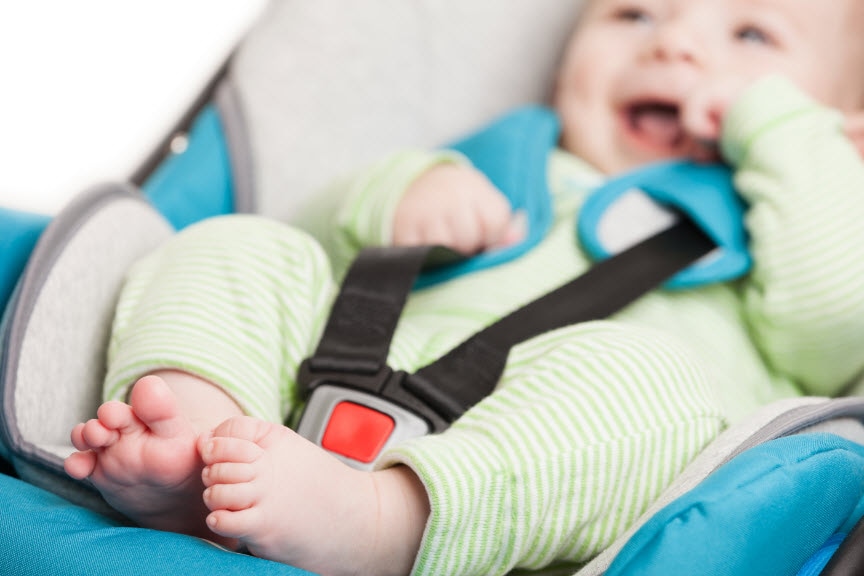
If you’ve been installing child safety seats for a while, you probably think you have it down cold. But statistics show that most parents have their children’s car seats installed improperly or are using the wrong type of seat entirely. This is something to take note of because to this day motor vehicle crashes remain the leading cause of death for children age 4 and the second leading cause of death for 3-year-old children and children between 5 to 14.
Having a properly installed child seat and using the proper type of seat for your child is incredibly important and not doing so can increase risk of injury if a car accident occurs. Child Passenger Safety Week, which passed on Sept. 13-19, produced some helpful tips for parents with small children, including this list of must-know guidelines:
- There shouldn’t be any give in the car seat straps. If your child complains when you’re tightening the straps, believe us, it’s not because they’re in pain. The straps should be snug to properly protect your child if a collision occurs.
- Use rear-facing child seats for as long as you possibly can; these seats are designed to keep the brain and spine protected during accidents. Only switch your child to a forward-facing seat when they’ve grown out of the rear-facing seat (which is typically around 2 years old).
- When your child transitions to a forward-facing seat, make sure that you ALWAYS use the tether straps in your car to anchor the seat. Using tethers reduces the distance a child’s head moves during a crash by approximately 4 to 6 inches, according to pediatrician Dr. Alisa Baer, aka The Car Seat Lady.
- How do you know when to transition a child to a booster seat? Baer says most kids aren’t ready to use booster seats until the age of 6, mostly because of their maturity level. Boosters can safely be used with children who are at least 4 years old and who weigh a minimum of 40 pounds, but for safety they should not play with the seatbelt, slouch or sit improperly, which can be hard for younger children. So, wait until your child is old enough and mature enough for the booster seat.
- After your child transitions to a booster seat, you should continue to use it until the seatbelt fits your child just exactly as it does when they’re in the booster seat. Typically, children 10 to 12 can ride without a booster, but the fit of the seatbelt will determine when you no longer need a booster seat.
Here are some additional useful tips:
- Children are safest in back. Experts recommend having children sit in back until at least the age of 13.
- The middle seat is the safest place in the car for children in car seats.
- Have your child seat checked by a technician who can tell you if it’s properly installed.
- If you’re in an accident, replace your child seat. It’s possible that it could be impaired even if there’s no visible damage.
- Car seats should generally be replaced every six to eight years. Make sure you know when your child’s car seat expires and be sure to replace it in a timely manner.